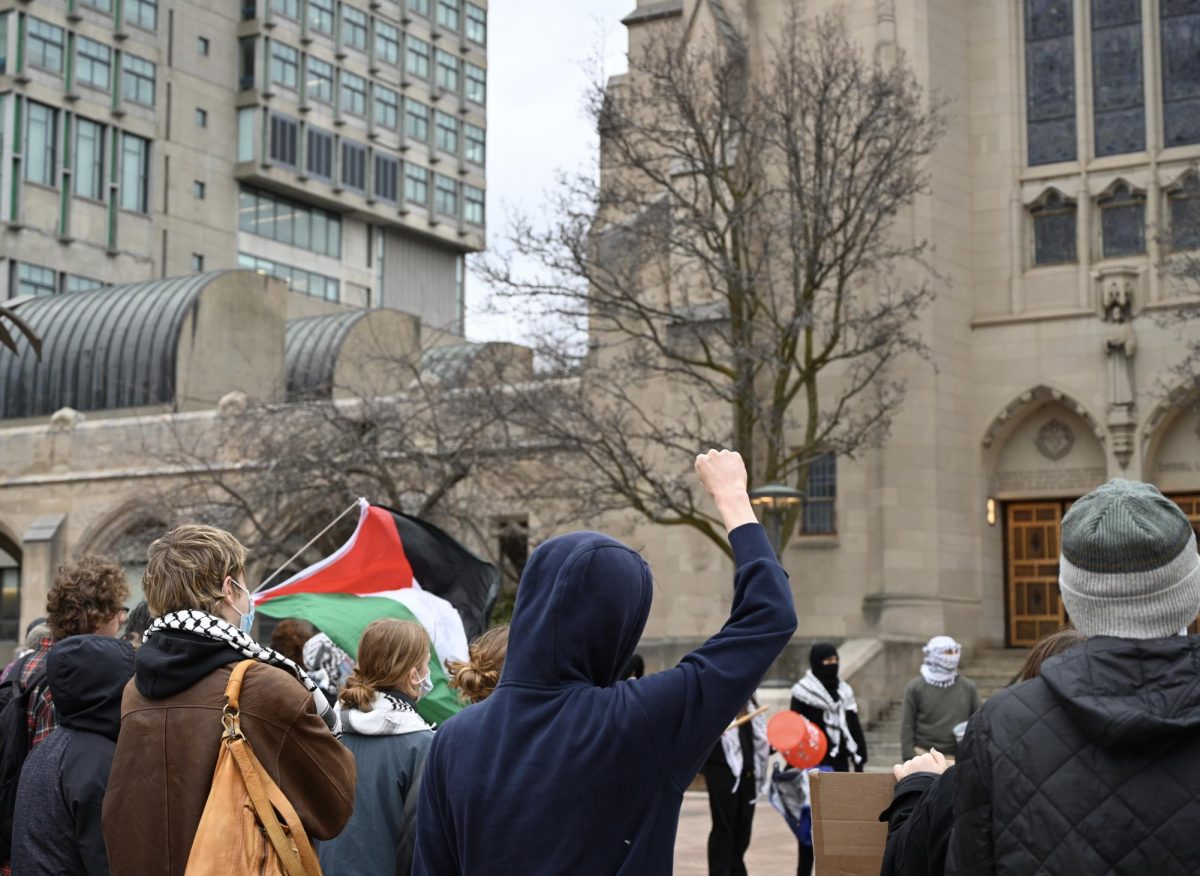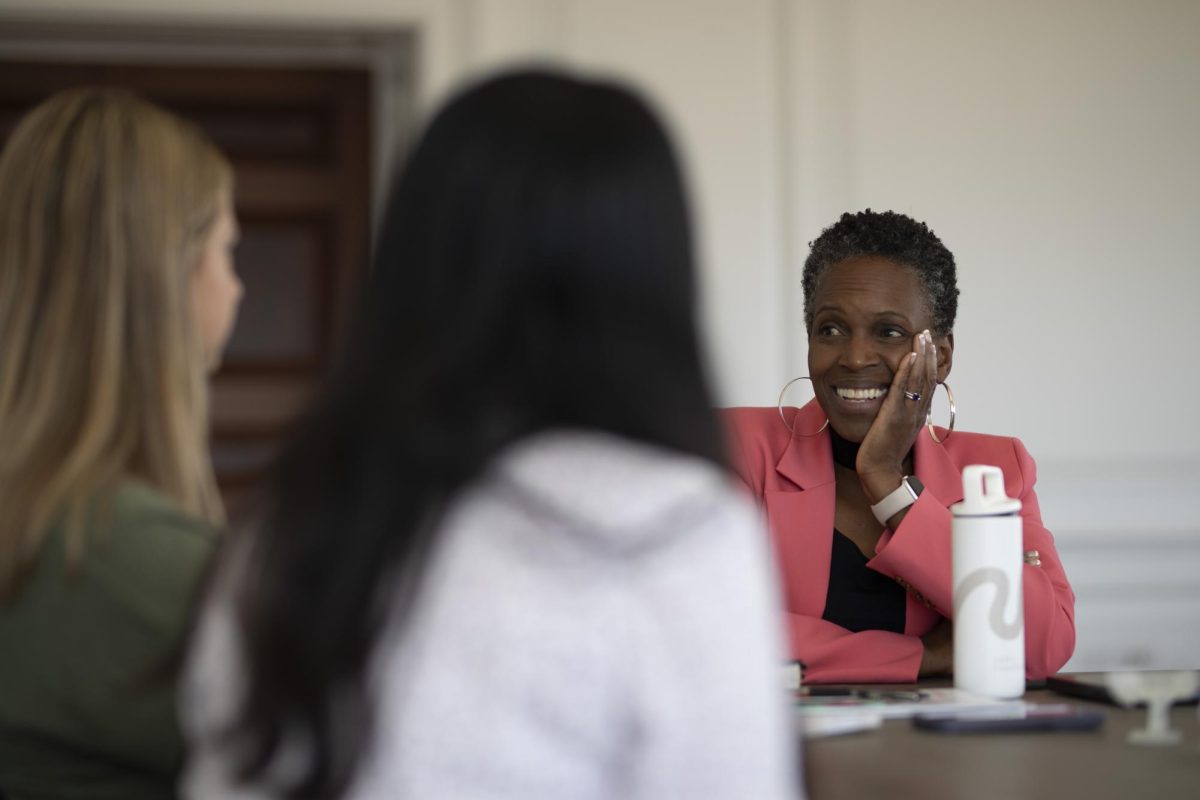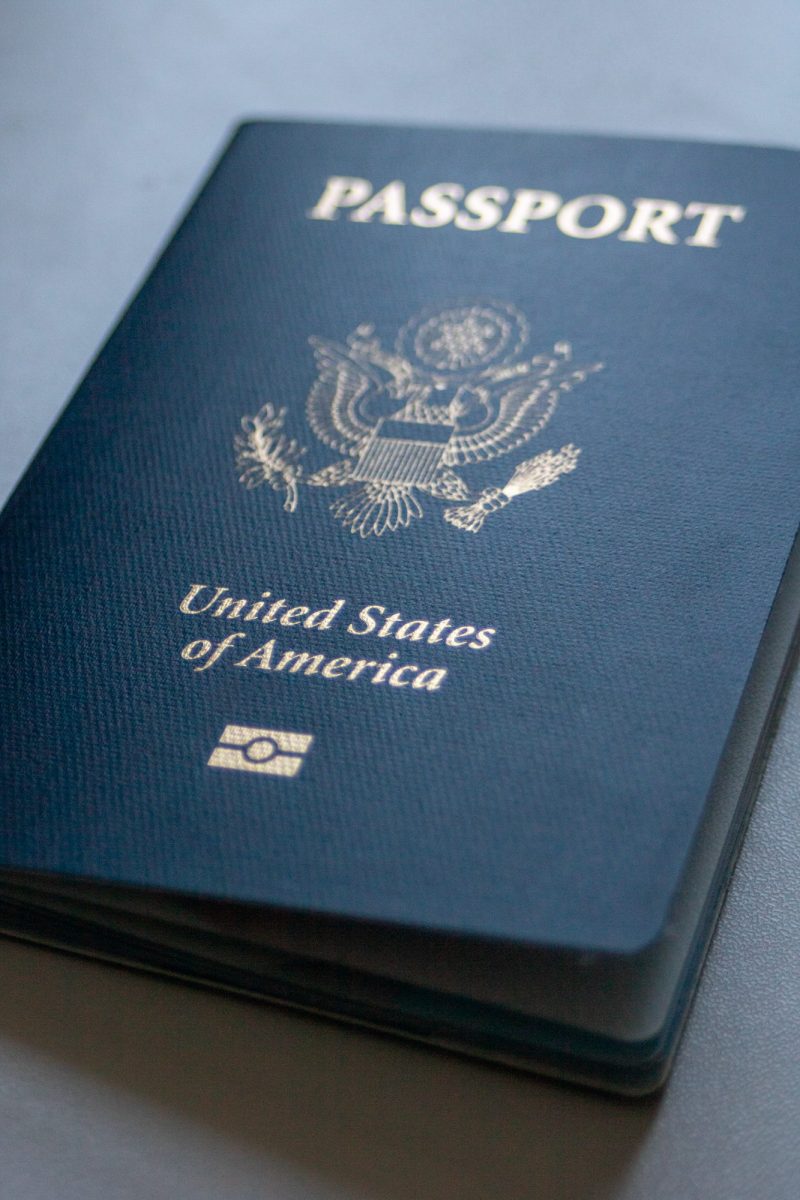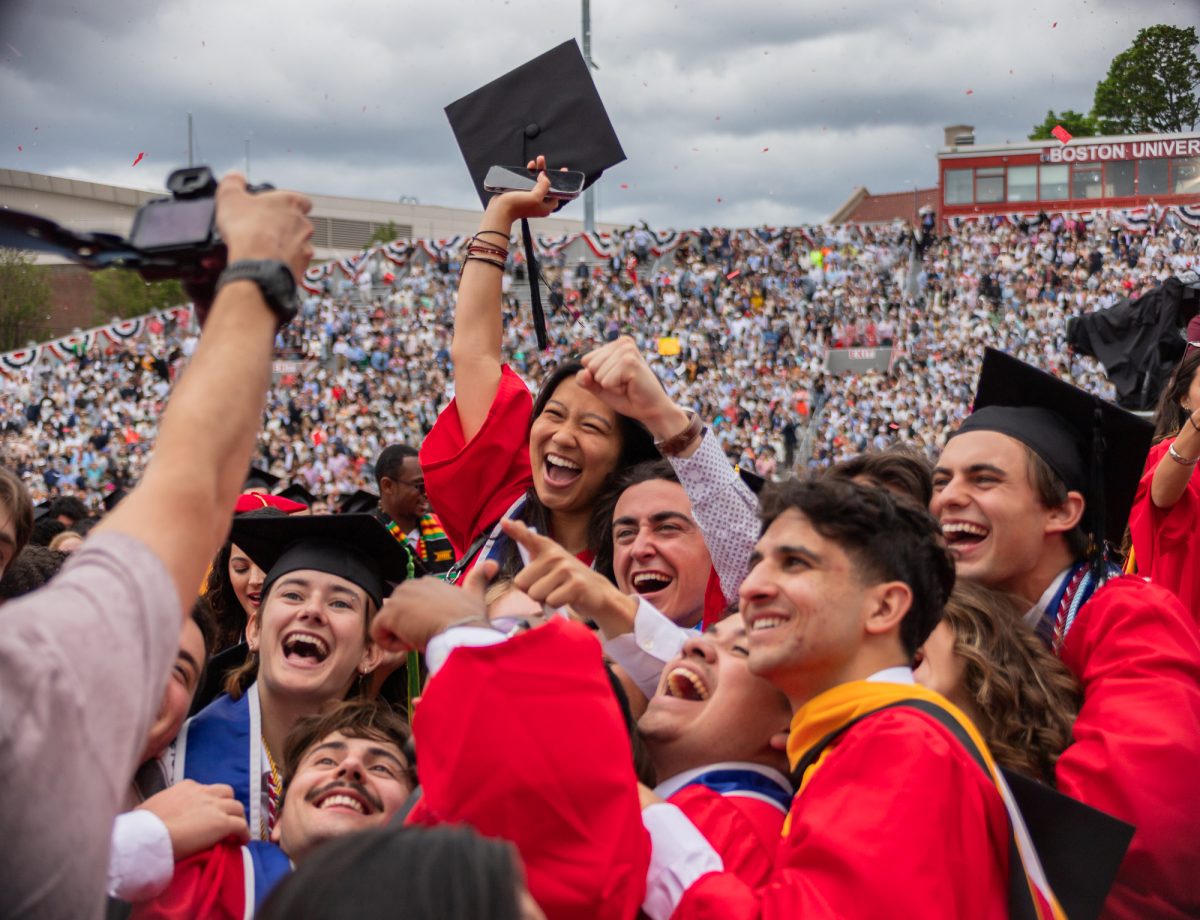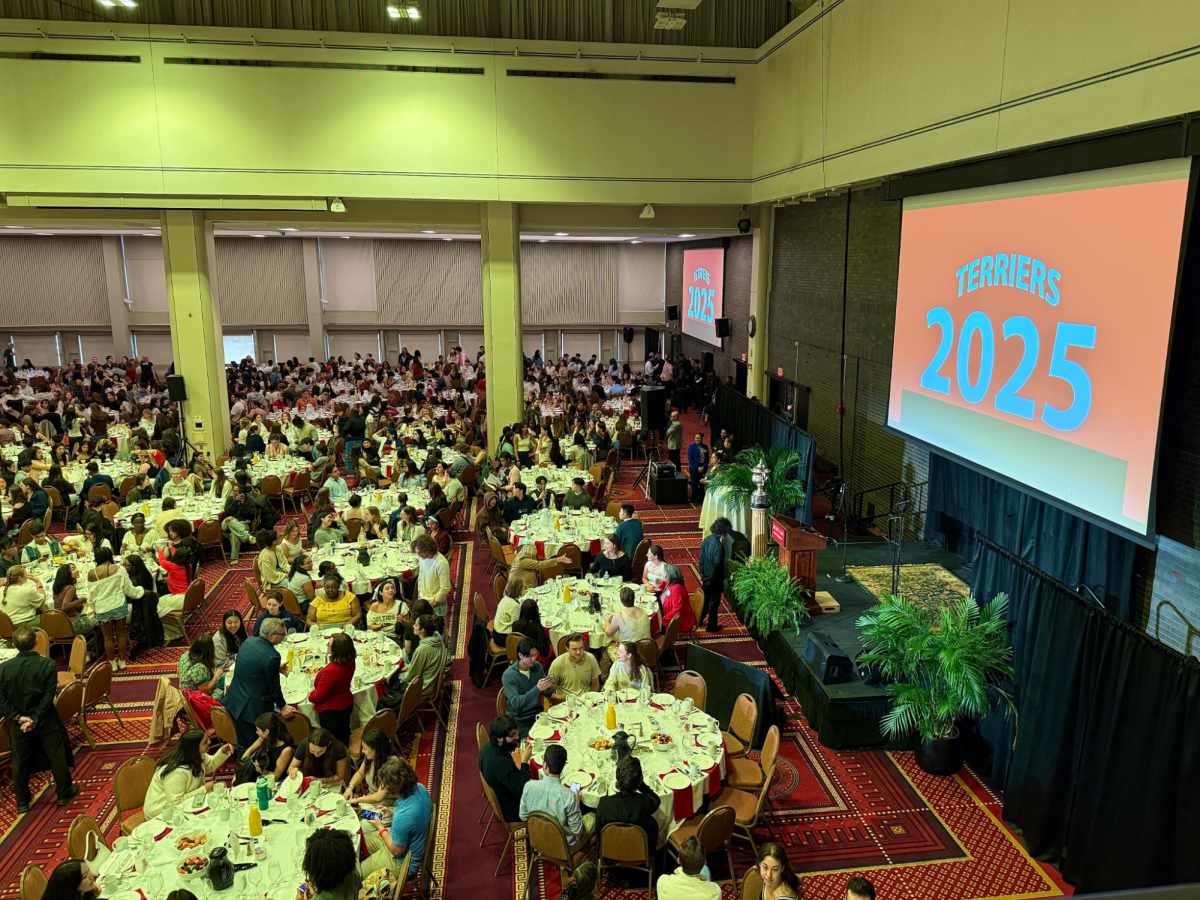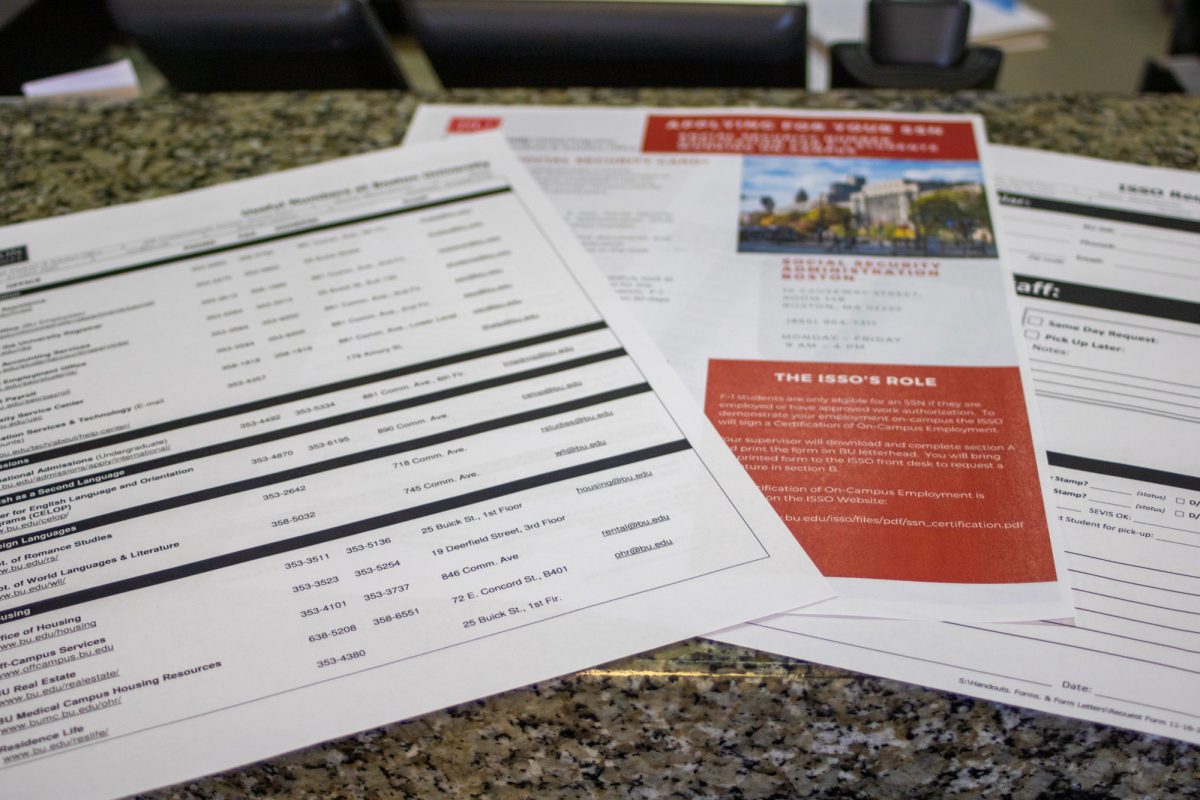Testimony continued Monday in the trial of Dzhokhar Tsarnaev, the 21-year-old who allegedly placed two bombs at the finish line of the 2013 Boston Marathon, killing three people and injuring more than 260. Tsarnaev has pled not guilty to the 30 federal counts for which he has been charged.
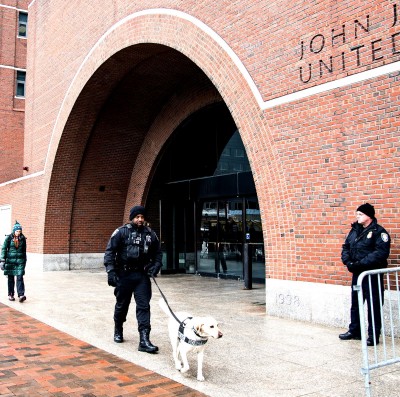
Expert testimony began with a continuation of testimony from FBI Special Agent and computer forensics expert Kevin Swindon, which commenced Thursday.
Swindon made clarifications about some of the files found on a folder on the Sony VAIO laptop created as storage for mobile sync backup.
“There are a standard set of things it attempts to store: contact, texts, the actual ID of the phone, SIM card and maybe images and other data that’d be on the phone,” he said.
Text messages contained within the backup could identify which phone produced the messages, most times being an iPhone 5 belonging to the defendant.
File evidence presented on the screen by the prosecution showed text messages extracted from the phone of Dias Kadyrbayev, a friend of Tsarnaev’s, from April 18, 2013 that could be traced back to Tsarnaev’s iPhone 5, Swindon confirmed.
“U saw the news? … Better not text me my friend,” one of the texts from Tsarnaev read.
Swindon said file extraction was also done on a Kingston thumb drive that can be traced back to the Sony VAIO laptop belonging to Tsarnaev based on information from its registry file.
“The registry collects and stores information of [developments] stored in the computer … [there was] an entry that showed the serial [number] of the thumb drive in the registry,” he said.
The computer of Tamerlan Tsarnaev, Dzhokhar’s older deceased brother who was killed in Watertown several days after the Marathon bombings, was taken from the scene where a pressure cooker detonated at Watertown and was unique because it had encryption software.
“You can change from clear text that is readable to cyphered text,” Swindon said. “It involves more data passwords and protections.”
Files found on four separate devices, including a folder labeled “JAHAR” found on an iPod nano and one titled “MP3PLAY” on an iPod shuffle, matched, Swindon said, and he verified the commonality.
The prosecution moved to include the match as evidence, which U.S. District Judge George O’Toole accepted.
Upon cross-examination, defense attorney Bill Fick questioned whether the sample of files on the Sony laptop were “representative in a proportional way.”
“A report was provided to the team members … [to] give them some insight. The volume of data is so voluminous, and we needed some way to scope down what is relevant to the investigation,” Swindon said.
Next, the prosecution called Matthew Levitt, an expert in terrorism from the Washington Institute for Near East Policy, to testify about the global jihad movement and the common themes used throughout jihad texts.
“It’s an idea … not a group with an office,” Levitt said. “[It’s] like-minded people pursuing, in their mind, a global jihad … You don’t have to be part of a terrorist group to be part of it.”
Social media has played a role in the increasing amount of “homegrown violent extremists,” Levitt said.
“They’re acting in concert with something bigger but don’t have to sign up or hold a membership card,” he said. “Before, you had to travel to get training, but now you can get indoctrination, motivation, schooling and skill set online.”
In dividing jihad in to an upper jihad that works toward self-improvement and a lower jihad that focuses on militancy and violence, Levitt said Muslim extremists have come to see the lesser jihad as the primary type that jihad followers should adhere to.
“The problem we have nowadays … is that the pace of radicalization is much much faster. The time frame is much much shorter over the past few years than we had seen in the past,” Levitt said.
Levitt said access to jihadi literature, namely the al-Qaeda produced Inspire Magazine, which was found on Tsarnaev’s computer, has removed the barrier to radicalization, making it impossible to predict who has sought exposure to fundamentalist teachings.
“Inspire Magazine is a glossy English language magazine produced by al-Qaeda in the Arabian Peninsula in Yemen. Because it was written in American Colloquial English, it’s so accessible and understandable to West, and particularly American youth,” he said.
Also found on his computer were articles by and audio files of sermons by Anwar al-Awlaki, the prominent American-born jihadist and Muslim imam who was killed in a 2011 American drone strike, Levitt said.
In 2012, one year after al-Awlaki’s death, Tsarnaev closely paraphrased one of his sermons in a tweet. Al-Awlaki’s sermon said that violence with Western militaries would drain the government’s resources and serves as an effective tactic within the ongoing conflict.
“They will spend their money, and they will regret it and then they will be defeated,” read a tweet from the @J_tsar account traced to Tsarnaev.
Inspire Magazine encouraged Muslims in the West to protect the Prophet by taking up arms and learning methods of war, Levitt said. The publication encouraged lone-wolf attacks because of their unlikely detection by counter-terrorism officials, and also contained detailed instructions about building a rudimentary bomb.
A “how-to” article published in Inspire entitled “How to Make a Bomb in the Kitchen of your Mom” by the “al-Qaeda Chef” explained the utility of pressure-cooker bombs, the prosecution displayed.
Regarding the same excerpt, Levitt said unsophisticated explosives are preferable because they can be made with readily available ingredients that won’t invite suspicion when purchased and can be easily disposed of if “the enemy searches your home,” stated an excerpt from Inspire Magazine.
Returning to content produced by al-Awlaki, the prosecution played a sermon for the jury that Tsarnaev downloaded, which Levitt said exemplifies the “on-the-go” inspiration Islamic radicals use as part of their recruitment efforts.
Levitt said al-Awlaki’s sermon said because people are destined to die, they should make their deaths meaningful through means such as martyrdom.
The prosecution displayed a transcription of the note scrawled on the inside of the Watertown boat where Tsarnaev hid before being captured by police on April 19, 2013. Levitt said parts of the message were influenced by jihadi messages he accessed electronically.
In pointing out linguistic choices, such as using the term “our innocent civilians” to describe the American people, Levitt said the note written by Tsarnaev in the boat was intended to explain his actions and motivations.
“This is clearly not written for fellow travelers, for fellow jihadis,” Levitt said. “This is an attempt to explain what’s been done, and I think the grammar is quite clear here.”



